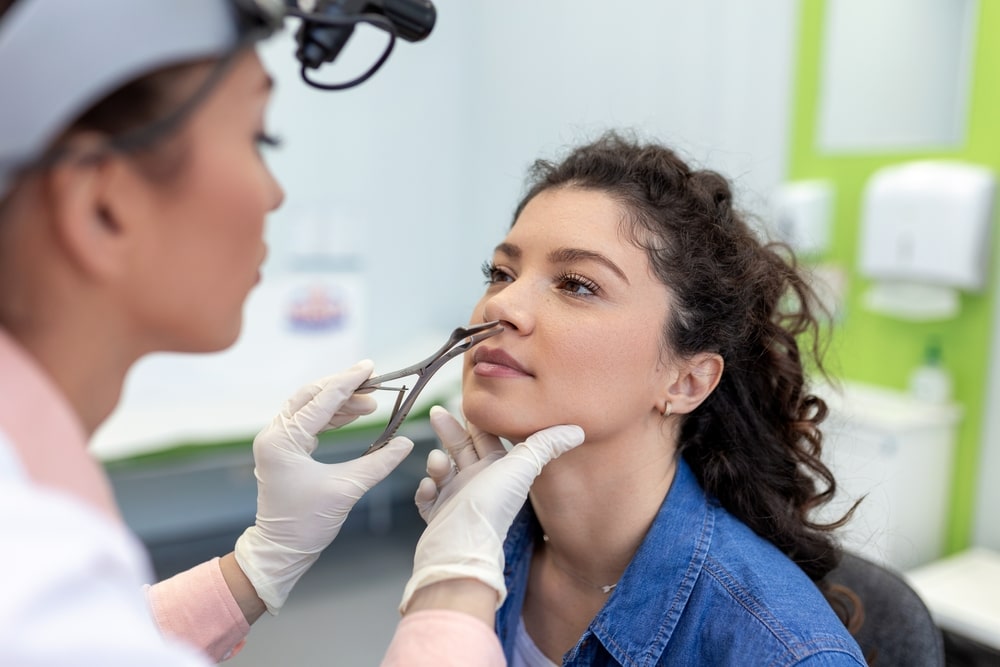This service or treatment is generally covered by most health insurance policies. You are responsible for checking your insurance policy cover, and you may need a referral letter. Check which insurance companies are covered.
Turbinate Reduction
Turbinate reduction surgery is an outpatient procedure performed to reduce nasal obstruction and improve airflow.

What is turbinate reduction?
Turbinate reduction is a surgical procedure that’s performed by an ear, nose and throat (ENT) specialist to improve breathing in patients with chronic nasal obstruction or congestion.
It’s a common procedure and can be performed alone or alongside other treatments, including septoplasty (surgery to correct a deviated septum) or rhinoplasty (surgery to correct breathing problems or reshape the nose). When combined with a septoplasty it is usually performed under general anaesthetic, but when performed alone it can often be undertaken under a short local anaesthetic, numbing the nose with sprays before the treatment.

Why is turbinate reduction done?
Turbinates are small, bony structures inside the nose that are responsible for directing the airflow inside the nasal cavity.
Factors including allergies, chemical or physical irritants, temperature changes or acute infections can cause the turbinates to swell, resulting in a blocked nose.
Most of the time, this inflammation is temporary and turbinates will return to normal size and nasal congestion will clear when the responsible factors are addressed or eliminated. However, if exposure continues, chronic swelling of the turbinates can develop. This makes breathing through the nose difficult and can also contribute to headaches and sleep disorders such as snoring and obstructive sleep apnoea.
Steroid nasal sprays and/or antihistamines are usually the first line of treatment for inflamed turbinates. If these nonsurgical treatments are ineffective, your specialist will likely recommend turbinate reduction surgery.

Turbinate reduction surgery process
At OneWelbeck, turbinate reduction surgery is performed as a same-day outpatient procedure. The surgery is very quick, taking between 5 to 20 minutes.
Depending on the severity of the swelling, your surgeon will either shrink or remove turbinate tissue using one of several techniques.
In most cases, the surgery is performed in outpatients, under local anaesthetic.
Your specialist will first use a local anaesthetic spray to numb the nasal cavity.
A small probe will then be inserted into the nose which causes scar tissue to form causing the turbinates to shrink (radiofrequency or laser ablation).
If the inflammation is severe, your surgeon may remove tissue from inside the turbinate (microdebrider submucosal resection), or cut away tissue from the turbinate itself (partial resection), under general anaesthetic as a day case procedure.

Risks of turbinate reduction
Turbinate reduction surgery is a common and well-practised treatment that is generally very safe with few complications.
The most common risks associated with the procedure are nasal obstruction caused by dry blood and crusting, and a small amount of bleeding. These post-operative symptoms may last up to 3 weeks and are very normal. There is a small risk of infection. All techniques involve conservative removal of tissue in order to help maintain normal turbinate function.
Your specialist will advise you of all the associated risks and together you will decide if turbinate reduction surgery is the best option for you.
Preparing for turbinate reduction
Before the procedure, you’ll have an initial consultation with your ENT specialist who will take a detailed history of your symptoms, and examine the inside of your nose. This will help them determine which technique is most appropriate and likely to be most effective.
Recovering from turbinate reduction
There’s usually very little or no pain or discomfort after outpatient turbinate reduction and recovery is straightforward. Many patients are able to go back to work the same or following day.
You may notice crusting develops around your nose post-procedure, and can last for around 2- 3 weeks. Using a nasal saline spray can help relieve this.
When tissue is removed under general aneasthesia, there is usually some swelling and mild bleeding after the procedure, and most people will require up to a week of post=operative recovery before resuming normal activity.
Paediatrics
We are able to offer appointments to paediatric patients aged 0+. For full information on our paediatrics service, please visit our main Paediatrics page.
Book a consultation
Dec 2025
Currently selected day
Available consultations
Treatment Programme
Turbinate Reduction
Introduction
Treatment
5 to 20 minutes
Preparation
Consultation
Risks
Low, small amount of post-op bleeding
Aftercare
Swelling and crusting
Price
Please contact the ENT team





